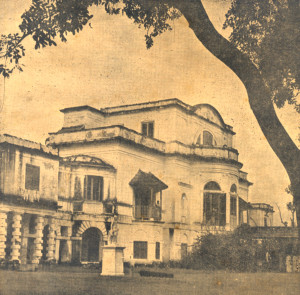Registered with the Registrar of Newspapers for India under R.N.I 53640/91
Vol. XXIX No. 5, June 16-30, 2019
Archives: Vol. XXIX No. 5, June 16-30, 2019
Continuing with the “Unauthorised saga”
by The Editor
And so, Chennai has added yet another feather to its crown of buildings that violate permits. The latest is a hospital (can you beat that?), which put up an eight-storey structure right in the middle of the city when it had permission to build only three floors. That was in 2007. Since then, for 12 years, it has continued to use the extra floors it put up, and what is more, had power and water connection to the edifice, thereby making it a fully functional block in the hospital complex. There was the matter of law of course and finally, in its slow fashion, it did catch up with the hospital. Late in May, the High Court ordered the demolition of the extra floors, citing that they compromised the safety of patients and hospital staff. The hospital has since gone on appeal and obtained a stay from the Supreme Court, which body has however said that the unauthorised portion must be vacated within ten days and not put to any use pending disposal of the case. The last chapter is clearly yet to be written.
What is astounding of course is the manner in which the hospital continued to build its floors, knowing fully well that they were not authorised. This is a classic instance of the impunity with which builders and property owners violate planning permissions when it comes to actual construction. That the administration turns a blind eye to such violations is well known. In the case of the hospital, the Inspector of Lifts for instance had granted permission to operate elevator services only up to the third floor but the hospital went on to extend them to all the remaining (and unauthorised) floors as well. It is astonishing that despite such a gross violation the authorities kept silent. When asked about this the Additional Advocate General, Tamil Nadu reportedly said that “that the officials could not demolish the unauthorised structures due to a series of ordinances promulgated between 2007 and 2012, followed by an amendment to the Town and Country Planning Act of 1971 in favour of such buildings and consequent government orders issued for regularisation of those constructions”.
In short, the Government had through its own contradictory orders managed to allow for such a situation to come to pass.
The entire saga sounds familiar to those who live in the city. It is an open secret that most high-rise structures violate norms and continue to exist, protected by the builder-bureaucrat-politician nexus or the time taken by law to come to a judgement.
NEET – Need to prepare for, and not politicise it
by A Special Correspondent
Much has been written, debated and politicised about NEET and its implications for Tamil Nadu students. The National Eligibility cum Entrance Test is the single threshold for admission to undergraduate MBBS and BDS courses in government and private colleges in the country. Now that the results of the 2019 test are available, it is time to analyse them and take an objective position on how to enable students to realise their aspiration.
Pavithra’s Perspective
Pavithra Srinivasan is a writer, journalist, artist, translator, columnist and an editor and is fascinated with History.
The Palace of books

Lost Landmarks of Chennai
- Sriram V
A Congress stronghold

THEN |

NOW |
|
Our Then is Blacker’s Garden, a colonial bungalow, dating to 1806 and |
|
A pioneer botanist – a path-breaker in horticulture
by Girija and M.S.Viraraghavan

E.K. Janaki Ammal.

